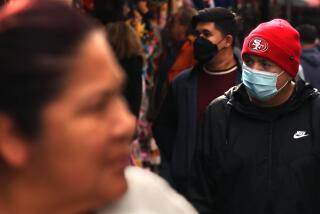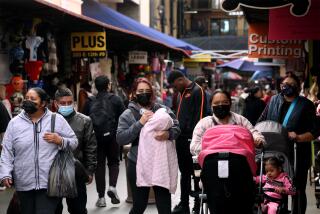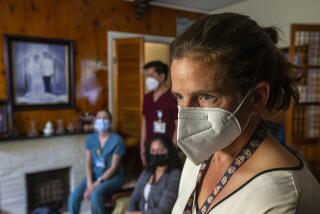As California clears backlog of COVID-19 cases, deaths hit a low for the month
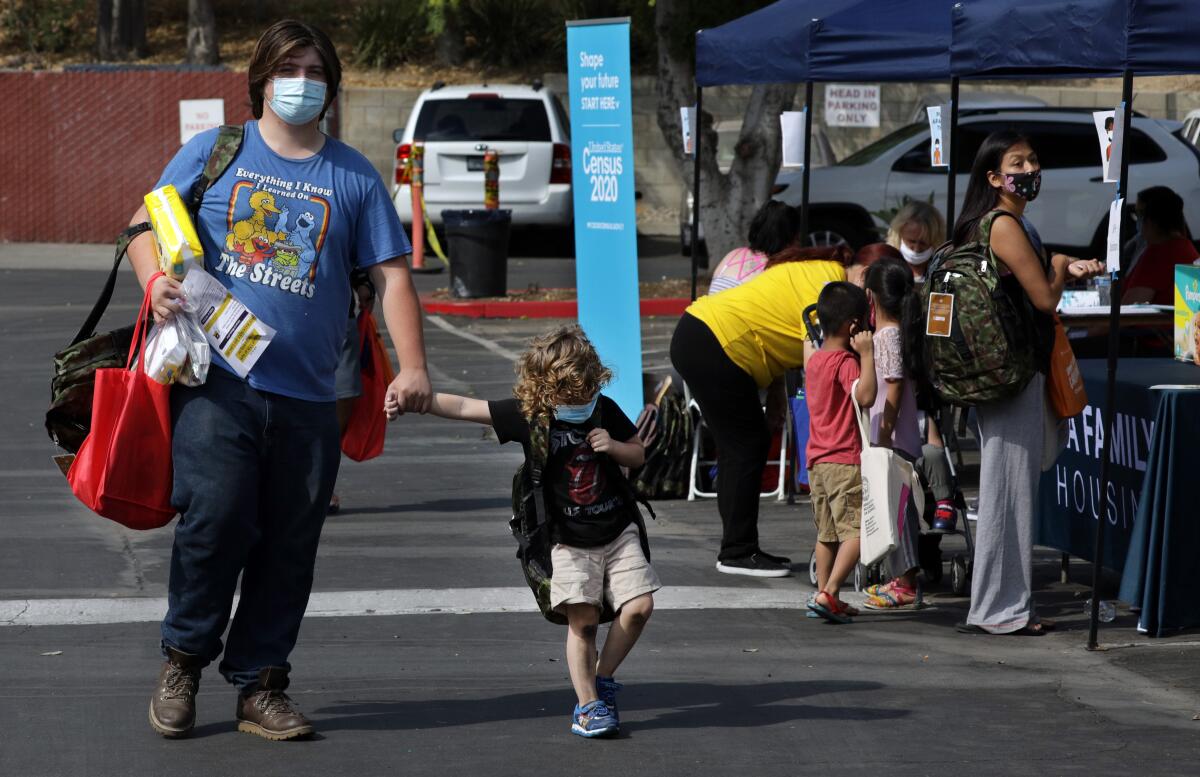
California received a batch of mostly positive pandemic-related developments on Monday with data showing that the number of people dying of COVID-19 is beginning to decline and hospitalization rates continue to fall steadily.
Gov. Gavin Newsom also announced that San Diego County, the state’s second largest, has made enough progress against the novel coronavirus that it could be removed from the watch list as early as this week.
In one of the key pandemic metrics, the seven-day daily rolling average of fatalities fell to fewer than 130 deaths per day on Sunday for the first time since last month, according to a Times analysis of state data. The number of hospital patients with COVID-19 has declined steadily for a month, the data show.
Community spread appears to be falling, too: The share of Californians who tested positive over a two-week period dipped to 6.5% Monday, an early indication that California is “stabilizing, and moving broadly in the right direction,” Newsom said.
The promising data come two weeks after Newsom touted a falling infection rate, then backtracked after officials found errors in how the data had been reported. On Monday, for the first time since the data breakdown, the state updated its watchlist of areas with high case rates, offering a mixed picture around the state.
Although Santa Cruz was taken off the list, four small counties — Amador, Mendocino, Inyo and Calaveras — were added and must close businesses by Thursday.
The infection rate in San Diego has stayed beneath 100 cases per 100,000 residents for nearly a week. “It’s extraordinarily good news, speaking on behalf not just of the county but the state of California,” Newsom said.
The state uses the watchlist to monitor surges in coronavirus cases, hospitalizations and community transmissions and to guide decisions on allowing counties to open certain sectors, including schools and in-person services at places of worship.
Los Angeles County continues to make progress toward getting off the watchlist, with the average daily number of infections, hospitalizations and deaths falling steadily, said Barbara Ferrer, the head of the Department of Public Health.
The county meets five of the six metrics used to measure progress against the pandemic, including testing more than 150 people per 100,000 residents per day, and maintaining a healthy margin of available intensive-care beds and ventilators.
The county continues to make progress on reducing community transmission to meet the most stubborn benchmark: a 14-day average of fewer than 100 coronavirus cases per 100,000 residents for three consecutive days.
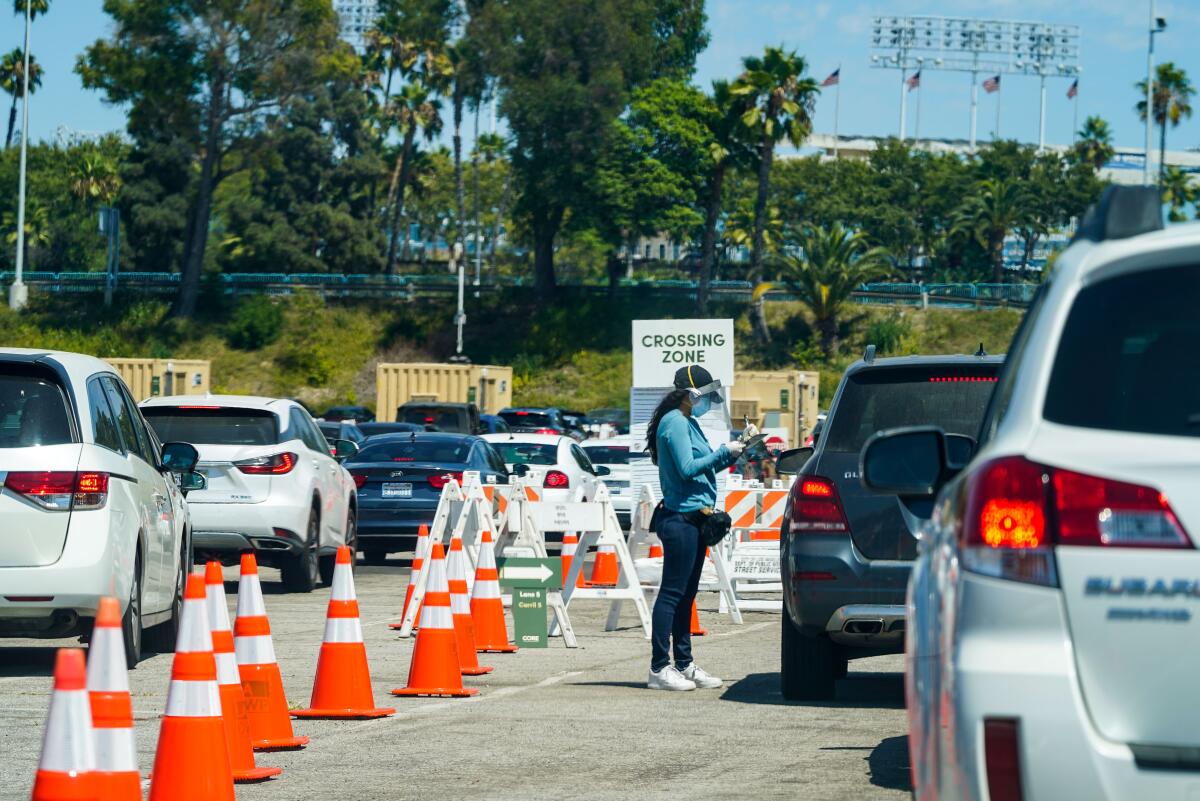
Last week, the county reported 335 cases per 100,000 residents; on Sunday, the rate was 298 cases per 100,000.
Daily hospitalizations in Los Angeles County have fallen 37% over a month, from 2,219 cases per day in mid-July, to 1,388 cases in mid-August, Ferrer said. The average number of daily deaths has fallen from 43 to 30 over the same time period, she said.
The hospitalization rate data is “one of our best indicators that our efforts over the last few weeks are actually working,” Ferrer said, in part because it was not affected by the data reporting errors.
The fallout from the data glitches remains unclear. As many as 300,000 records, including tens of thousands of test results, had not been uploaded to the Sacramento database that local officials use to receive test results from laboratories. That led to inaccurate summaries of infection rates and confirmed cases.
The county added between 1,500 and 1,600 coronavirus cases after the state data error, Ferrer said Monday. But the state is still working to determine how many lab results for L.A. County have not yet been reported, and the county will have to revise the rolling averages for testing rates and case counts, she said.
With that caveat, Ferrer said, health officials believe that the average number of people testing positive for COVID-19 per day has fallen from 3,200 in mid-July to a little more than 2,000 people per day in mid-August.
“We do still have a ways to go to reduce community transmission enough to be able to have confidence that the timing would be right to reopen our schools and get more people back to work,” Ferrer said. “We don’t want infections from the community coming back into our schools and creating an increase of outbreaks.”
The data are cause for optimism, but does not mean that life can immediately return to normal, officials caution. California saw a similar decline in cases, and then a surge of new infections, at the start of June after the state began reopening.
“We’re just not getting back to normal right now,” Ferrer said. “We are creating a new normal. It will continue to have, and request of all of us, the ability to make some modifications. It will have some restrictions in place.”
More to Read
Sign up for Essential California
The most important California stories and recommendations in your inbox every morning.
You may occasionally receive promotional content from the Los Angeles Times.
